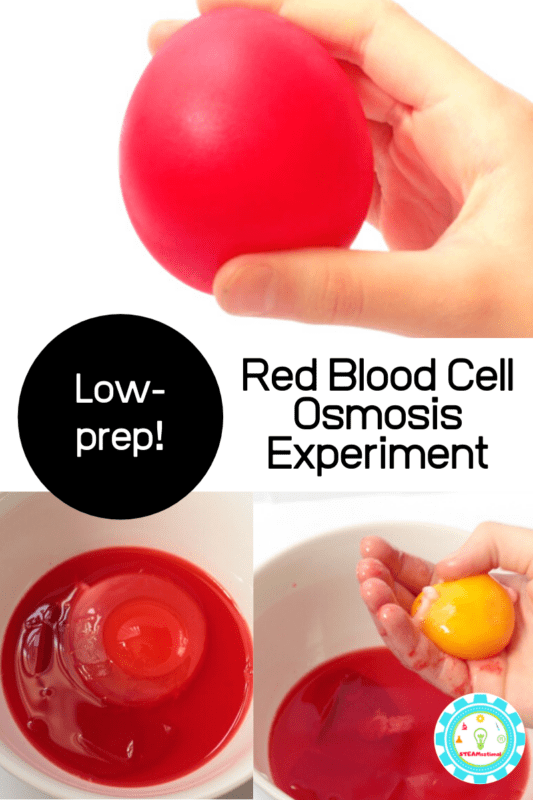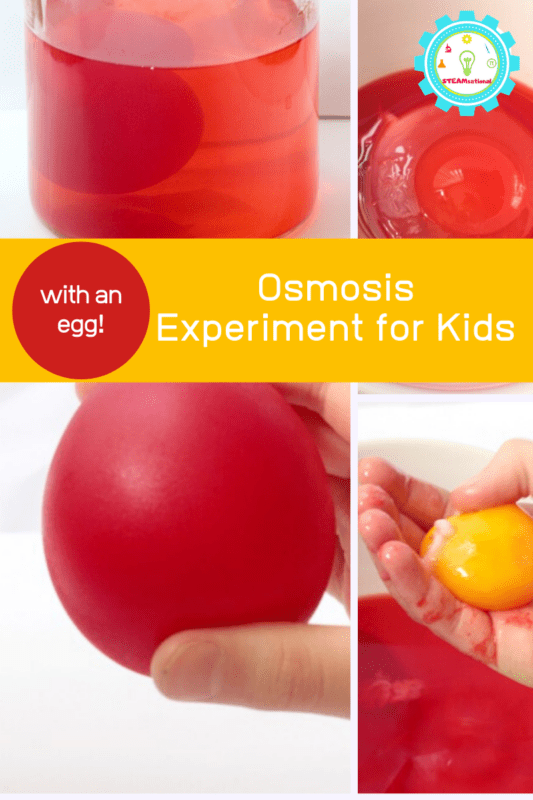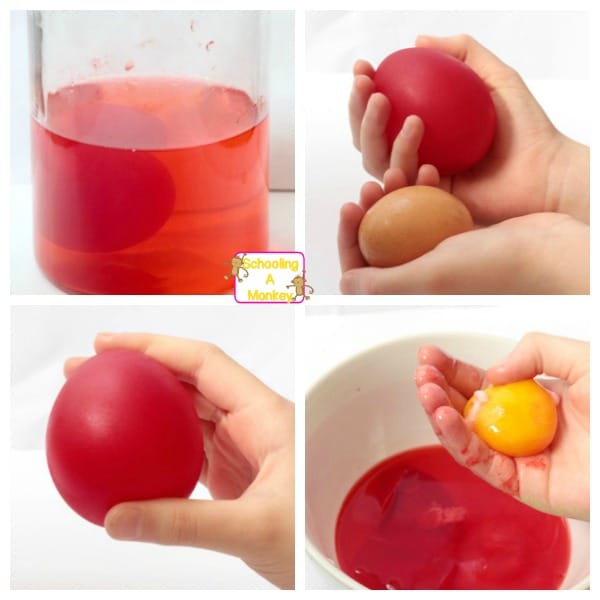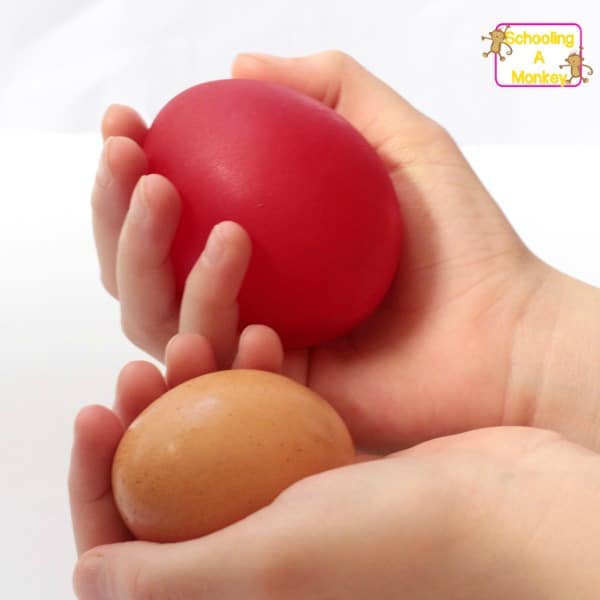If you are currently researching elementary school science fair projects, you’ll want to add the osmosis experiment for kids to your list!
The best part about this science experiment is that you can do it at home with items you already have in the house.
It also works well in a classroom environment to teach kids about cell membranes, osmosis, and the parts of an egg!
The inspiration behind this osmosis experiment is a mix between the classic naked egg experiment and a demonstration of a cell membrane lab.

Cell Membrane Experiment with an Egg: Osmosis Experiment for Kids
This twist on the classic naked egg science experiment illustrates the concept of osmosis in a fun and surprising way for kids. Osmosis for kids has never been easier to explain.
Add a few variables and you’re ready to have an easy science fair project without stress.
How to Explain Osmosis to a Child
Keep reading to learn the osmosis egg experiment explanation.
The inside membrane of an egg is a semi-permeable membrane. The inside of the egg has a lower water concentration than the container, so over time, the membrane of the egg allows water to seep into the egg.
This makes the egg much bigger. The membrane is made partially of keratin protein, which is also found in human hair.
At first, children will likely think that the egg’s membrane is solid, but the soaking the egg in the red water will show that the membrane is semi-permeable, but strong enough to hold the water once it is removed from the container.
Monkey hypothesized that the molecules of the yolk were “full” and could not accept any additional chemical bonds which prevented the water from entering the yolk.
Thanks to a reader, we now know that the proteins in the yolk are impermeable, so the dye cannot get through! So Monkey was close.
How to Turn the Osmosis Experiment into a Science Fair Project
The difference between a science demonstration and a science experiment is a hypothesis, variables, and testing.
For this osmosis experiment, kids could answer questions like:
What material dissolves eggshell the fastest?
Do all eggs have a semipermeable membrane?
Are there materials that will make an eggshell stronger instead of weaker?
Is there a way to prevent the osmosis process from happening?
Is it possible to pull the liquid back out onto the outside of the membrane?
Answering these questions with variables and testing and recording the data will make this a super easy osmosis addition to classic science fair projects.
Red Blood Cell Osmosis Activity Supplies
What You Need for a Science Fair
You’ll want to have these supplies on hand before doing your science fair project. Shop the included Amazon storefronts to make things easier and don’t forget to download the free science fair planning checklist before getting started!
Science Fair Project Planning
When you’re planning your project, you want to keep everything organized. Click the image below to get my free science fair project checklist so you can start organizing your project from the start.
You may also want to check out this list of science fair project research supplies.
Supplies for a Science Fair Project
There are so many supplies for science fair projects that are individual to each project, but if you want a general list of possible supplies and inspiration for your project, check out my selection of science fair experiment supplies on Amazon.
Supplies for a Science Fair Presentation
Your science fair presentation is important! It should look presentable and eye-catching. Check out this list of my favorite science fair presentation supplies.
Osmosis Science Fair Project Directions
Follow along with these directions to make your own osmosis science demonstration using an egg!

Phase One
This part of the experiment follows the basic instructions for the naked egg science experiment. First, soak your raw egg in about 2 cups of vinegar for about 24 to 48 hours.
The vinegar will dissolve the egg shell because the acid reacts with calcium carbonate that makes up an egg’s shell.
This produces carbon dioxide, calcium, and water. When the surface of the vinegar is scummy and bubbly, you are ready to start phase two.
Phase Two

Fill a large container about halfway full with water. Add red food coloring to turn the water red. Carefully move your naked egg into the red water. Let the egg sit for about 24 hours.
Phase Three

Remove the egg from the water. It should now be a bright red, but completely egg shaped.
If you dry the egg with a paper towel, you can see that it is completely dry and will not leak.
How does this work? It is all about osmosis!
Popping the egg will reveal that the inside white of the egg has turned red, but the yolk has remained orange.
Although the membrane surrounding the egg yolk and white can soak up water, the yolk itself does not.
More Science Fair Project Ideas
Cow Digestive System Project for a Science Fair
20+ Science Fair Projects with LEGOs that are Educational and Fun

